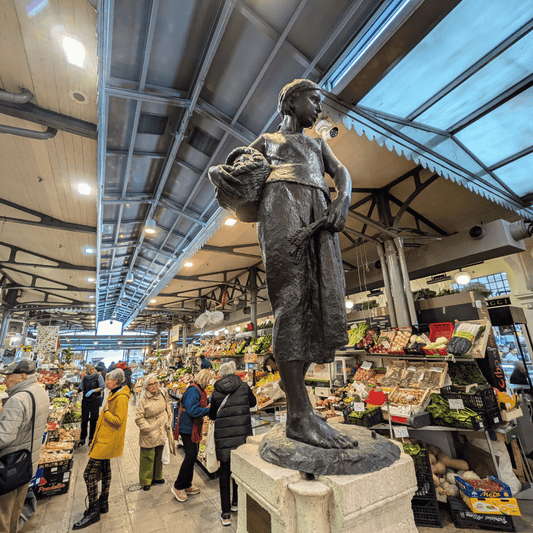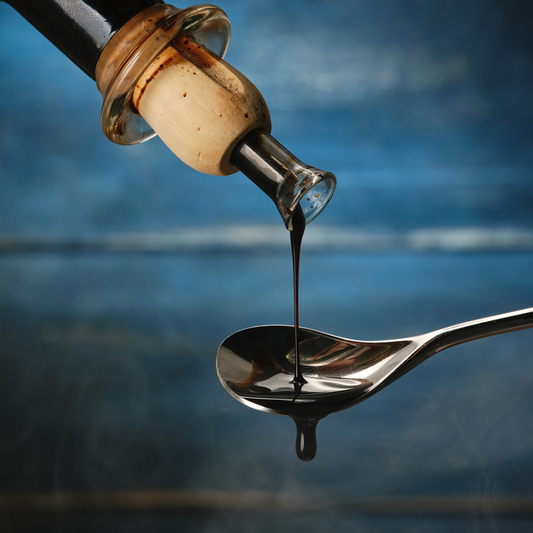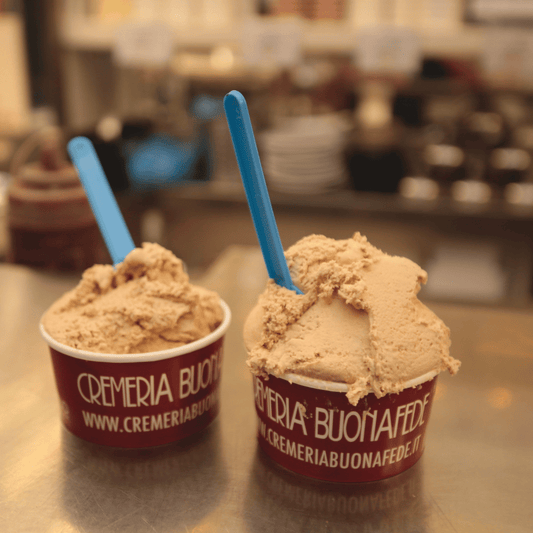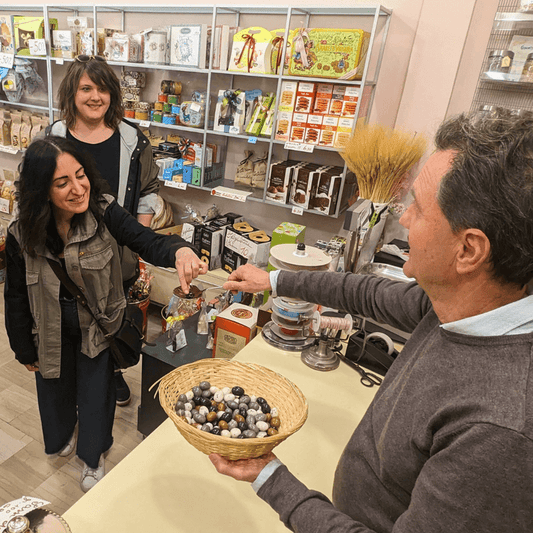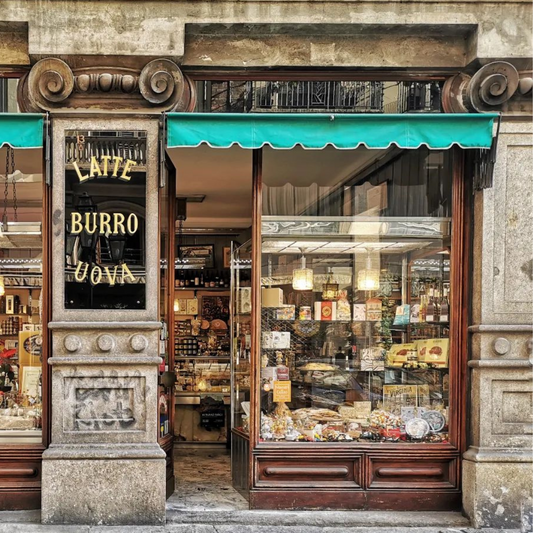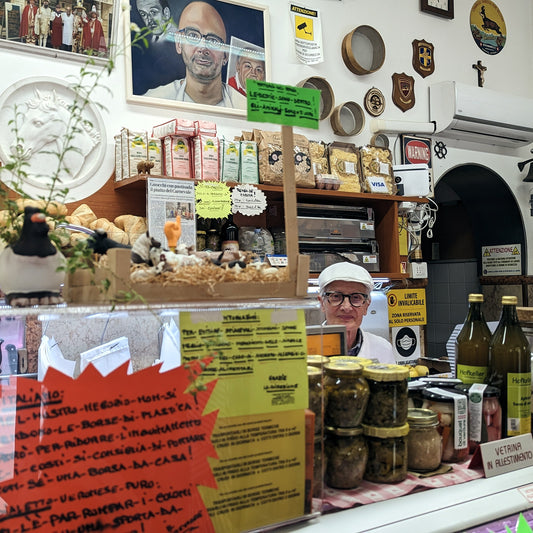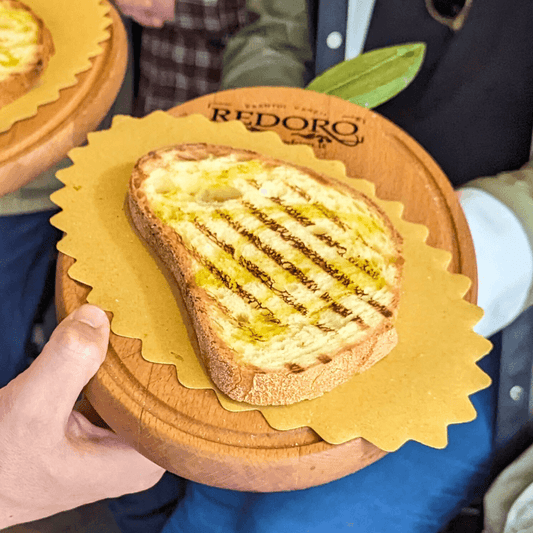Italy is renowned for its rich and diverse food culture, which varies significantly across regions. Here's a the best things to do in Italy: eat. So this is a list of what you should eat in a food tour around Italy:
1. Bakery Goods
- Pane (Bread): Various types such as ciabatta, focaccia, and pane di Altamura.
- Grissini (Breadsticks): Thin, crunchy breadsticks often served with appetizers.
- Cornetto: Italian croissant, often filled with jam, cream, or chocolate.
- Focaccia: Flat oven-baked bread, often topped with olive oil, herbs, or salt.
- Cantucci: Almond biscuits, typically served with vin santo (sweet wine).
2. Cheese
- Parmigiano Reggiano: Hard, aged cheese from Parma, a key ingredient in many Italian dishes.
- Mozzarella di Bufala: Soft, creamy cheese from Campania made from buffalo milk.
- Gorgonzola: A type of blue cheese from the northern regions of Italy.
- Pecorino: A family of hard, salty cheeses made from sheep's milk.
- Ricotta: Soft, creamy cheese, often used in desserts or pasta fillings.
3. Fresh Vegetables
- Tomatoes: Essential in Italian cuisine, especially in sauces (e.g., San Marzano tomatoes).
- Olives: Used in cooking, as snacks, or pressed for olive oil.
- Eggplants (Melanzane): A key ingredient in dishes like Eggplant Parmesan.
- Zucchini: Often grilled, stuffed, or used in pasta dishes.
- Artichokes: Especially popular in Roman and Lazio cuisine.
- Fennel: Commonly used in salads and as a side dish.
- Spinach: Frequently used in pasta fillings, risottos, and salads.
4. Fruits
- Citrus Fruits: Oranges, lemons, and mandarins, particularly from Sicily and Amalfi Coast.
- Apples: Grown in the northern regions, used in pies and cakes.
- Pears: Often featured in desserts or salads.
- Grapes: Integral for both eating and winemaking.
- Berries: Strawberries, raspberries, and blackberries in many desserts.
5. Meats and Charcuterie
- Prosciutto di Parma: Dry-cured ham, a staple in many Italian dishes.
- Salami: Various types of Italian salami, including Genoa and Milano salami.
- Bresaola: Air-dried, salted beef from the Lombardy region.
- Sausages: Salsiccia, often used in pasta dishes or grilled.
- Porchetta: Roasted, seasoned pork, typically served as a sandwich filling or at festive events.
6. Pasta
- Spaghetti: Long, thin noodles often served with tomato-based sauces.
- Fettuccine: Flat, wide noodles, typically paired with rich sauces like Alfredo.
- Ravioli: Pasta pockets filled with cheese, meat, or vegetables.
- Lasagna: Layered pasta dish, typically with meat sauce, béchamel, and cheese.
- Penne: Tube-shaped pasta often paired with hearty sauces like arrabbiata.
7. Olive Oil
- Extra Virgin Olive Oil (EVOO): Used in salads, cooking, and drizzling over pasta, bread, or vegetables.
- Flavored Olive Oils: Often infused with herbs like basil, garlic, or truffle.
8. Seafood
- Sardines: Often grilled or served in pasta dishes, especially in Sicilian cuisine.
- Anchovies: Used in sauces, pizza, or served as an appetizer.
- Calamari: Squid, often fried or grilled, and used in pasta dishes.
- Branzino: A Mediterranean seabass, grilled or roasted.
- Sea Urchins: A delicacy often served in pasta or as a topping.
9. Pastries and Sweets
- Tiramisu: A coffee-flavored dessert made with mascarpone cheese, ladyfingers, and cocoa.
- Cannoli: Crispy pastry shells filled with sweet ricotta cream, often garnished with candied fruit or chocolate chips.
- Panna Cotta: Creamy dessert, typically served with berries or caramel sauce.
- Gelato: Italian-style ice cream, richer and denser than typical ice cream.
- Panettone: Sweet bread loaf typically enjoyed during Christmas, filled with dried fruit or chocolate.
10. Herbs and Spices
- Basil: Fresh basil is crucial in pesto and many Mediterranean dishes.
- Oregano: Commonly used in pizza, pasta sauces, and roasted dishes.
- Rosemary: Often paired with meats, especially lamb or pork.
- Thyme: Used in various Italian stews and meat dishes.
- Garlic: A fundamental ingredient in Italian cuisine, used in everything from pasta sauces to roasted meats.
11. Beverages
- Wine: Italy is famous for its wine, with varieties like Chianti, Barolo, Prosecco, and Pinot Grigio.
- Espresso: A small, strong coffee served throughout the day.
- Limoncello: A lemon liqueur from the Amalfi Coast, typically served chilled after meals.
- Grappa: A potent Italian brandy made from grape pomace.
12. Beans and Legumes
- Chickpeas: Often used in soups, salads, or purees like hummus.
- Lentils: Used in soups, stews, and salads.
- Fava Beans: A traditional ingredient in Roman cuisine.
- Cannellini Beans: Used in Italian soups and side dishes.
Italy's food culture is deeply rooted in local traditions, with each region offering distinct ingredients and culinary techniques. From fresh produce to world-class cheeses, Italy’s food is as diverse and rich as its history.





